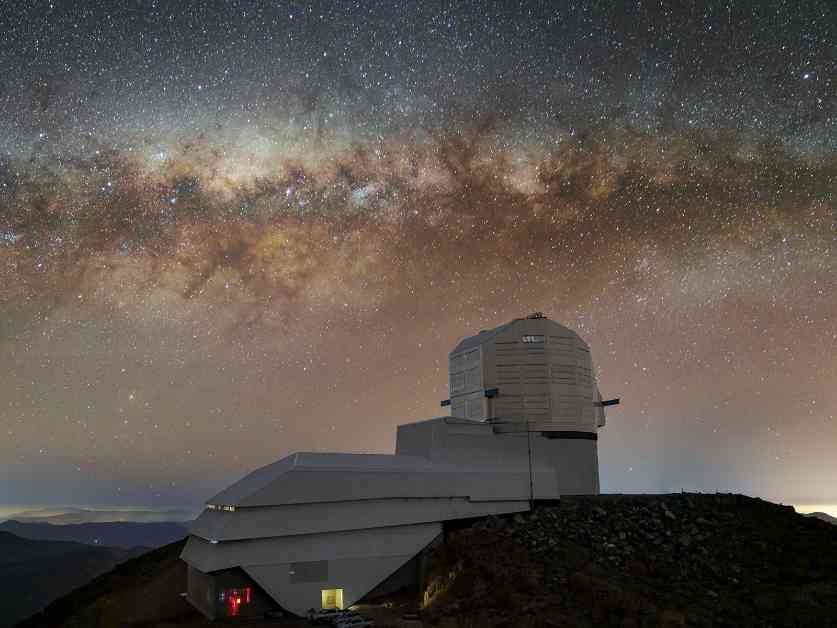The night sky may seem unchanging to the naked eye, but astronomers have discovered numerous transient phenomena when they observe it closely. Variable stars, supernovas, and asteroids are just a few examples of the dynamic processes at work in the cosmos. To better understand these phenomena, the Vera C. Rubin Observatory is being constructed in northern Chile. This observatory will feature a massive telescope with a 28-foot primary mirror and a 3.2-gigapixel camera, allowing it to scan the entire visible sky every three days.
The telescope’s agility and large field of view will enable it to track objects that change in brightness or position over time. With its world’s largest digital camera, the observatory will be able to detect objects as small as a golf ball 15 miles away. The primary mirror and camera have been meticulously constructed and installed, with the facility expected to begin operations next year. Once operational, the telescope will record more than six million gigabytes of data per year, requiring advanced algorithms to sift through the vast amounts of information.
One of the primary goals of the Rubin Observatory is to discover previously unknown asteroids, some as small as a marble and others as large as a few hundred miles across. By detecting these objects early, the observatory can provide alerts to the astronomical community to study them in more detail. Additionally, tracking asteroids is crucial for planetary defense, as it allows scientists to potentially deflect hazardous asteroids that pose a threat to Earth.
In addition to asteroids, the observatory will also image millions of galaxies, pinpointing those with supernovas. Studying these exploding stars can help astronomers create 3D maps of the cosmos, providing insights into the distribution of dark matter and dark energy. By accurately mapping the distribution of galaxies, researchers hope to unravel the mysteries surrounding dark energy, a force that is causing the universe to expand and accelerate.
The Rubin Observatory, formerly known as the Large Synoptic Survey Telescope, was renamed in honor of Vera C. Rubin, an influential astronomer who provided evidence for the existence of dark matter. The decision to name the observatory after Rubin acknowledges her significant contributions to the field of astronomy. Through the data collected by the observatory, scientists aim to test different models of dark energy and further our understanding of the universe’s evolution.
Overall, the Vera C. Rubin Observatory represents a groundbreaking advancement in astronomical research, allowing scientists to track transient phenomena, discover new asteroids, and study the mysteries of dark matter and dark energy. With its advanced technology and capabilities, the observatory is poised to revolutionize our understanding of the cosmos and the dynamic processes at work within it.






